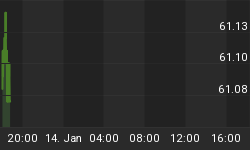Excerpted from the September 26th edition of Notes From the Rabbit Hole. The entire report is available for free download here (see side panel under 'Sample Issues').
The 'big picture' monthly chart of the S&P 500 continues to grapple with the 'bull trigger' EMA 20. It could prove a costly mistake to jump the gun on this signal; despite the tune the boom bands will play once they pick up on it. As it stands, the monthly candle has recoiled after probing above. Upon a successful monthly close above the EMA 20, we will keep in mind the constructive work that would need to be done over two or three months, as in 2003 (blue box), to confirm. We will also keep in mind that the Crash of '29 was followed by a retrace of 50% of the Dow's decline in 1930, before all hope was eventually lost, again.

Once again, it cannot be denied that the bulls have done a lot of good technical work since the unsustainable lows. That is a furious up move from March and it has left many people in the dust, and in a poor mental state, at least as far as their market orientation is concerned.
There are positive 'big picture' signs in leading markets like Hong Kong and China, although in the daily and weekly time frames these markets appear to be topping out in relation to the S&P 500. This would be in preparation for leading the next leg down into whatever comes next. It is that whatever that will give us a signal as to whether we are going to make money or preserve capital. After all this waiting and staying, I look forward to the coming phase, which will define whether we are looking at a 'higher low leading to new highs of a mini-bull in mid 2010' scenario or the 1930 model that brings on new lows once this impetuous move exhausts itself.
To fine tune to the shorter term, let's look at the SPX daily chart. We have a reverse symmetrical triangle and a rising wedge; two patterns that are notably bearish. We have negative divergence by momentum indicators and a STO crossed below 80. But we also see the supportive short-term daily EMA 20 not yet threatened and RSI support fast approaching. There is nothing in this chart that screams out 'GET ACTIVELY BEARISH'. An initial warning would be a loss of the SMA 50, which would also break the wedge. Watch this closely going forward.
Dialing it out a bit, upon a break of the SMA 50 and the wedge, we look to the upturned SMA 200 and the strong support that lay just beneath it. A rising wedge, if it indeed breaks down, does not mean the end of the world, even though some technicians present that way. It simply means that a good portion of the rise encompassed by the wedge will be retraced. The 875 (strong support) area would qualify as a solid retrace.
Meanwhile, we will anticipate an eventual test of strong support. That area is a likely battleground that will help decide the intermediate and longer term trends.

Speaking of rising wedges, the following weekly China-S&P 500 ratio chart (FXI-SPY) shows that yet another week has been tacked on to the technical breakdown. When you look at a chart like this you realize how long it can take for building pressures to express themselves. This breakdown in the leader (FXI) vs. the laggard (SPY) continues to pathetically cling to the underside of the wedge. Meanwhile, market participants either have patience or ultimately pay the price. We are about to enter week 7 of the wedge breakdown.
The lower high of July vs. a year ago, along with the MACD down trigger is telling. A chart like this should help people tune out the noise. Back above the wedge one can always evaluate whether or not to get bullish again. But giving in to the upside while a bearish divergence like this remains in force could prove very unwise. But then again, this is what makes a market, and I consider it a gift from the market gods that many investors think technical analysis is so much phooey.

We'll conclude the stock market section with a couple post G-20 headlines. Enough said, contrary indicator-wise:
G-20 declares victory over crisis... --Reuters
Obama: G-20 brought economy back from brink --AP
Download the entire 1 year anniversary issue for free for additional analysis on precious metals, commodities and much more. See side bar under 'Sample Issues'.
















